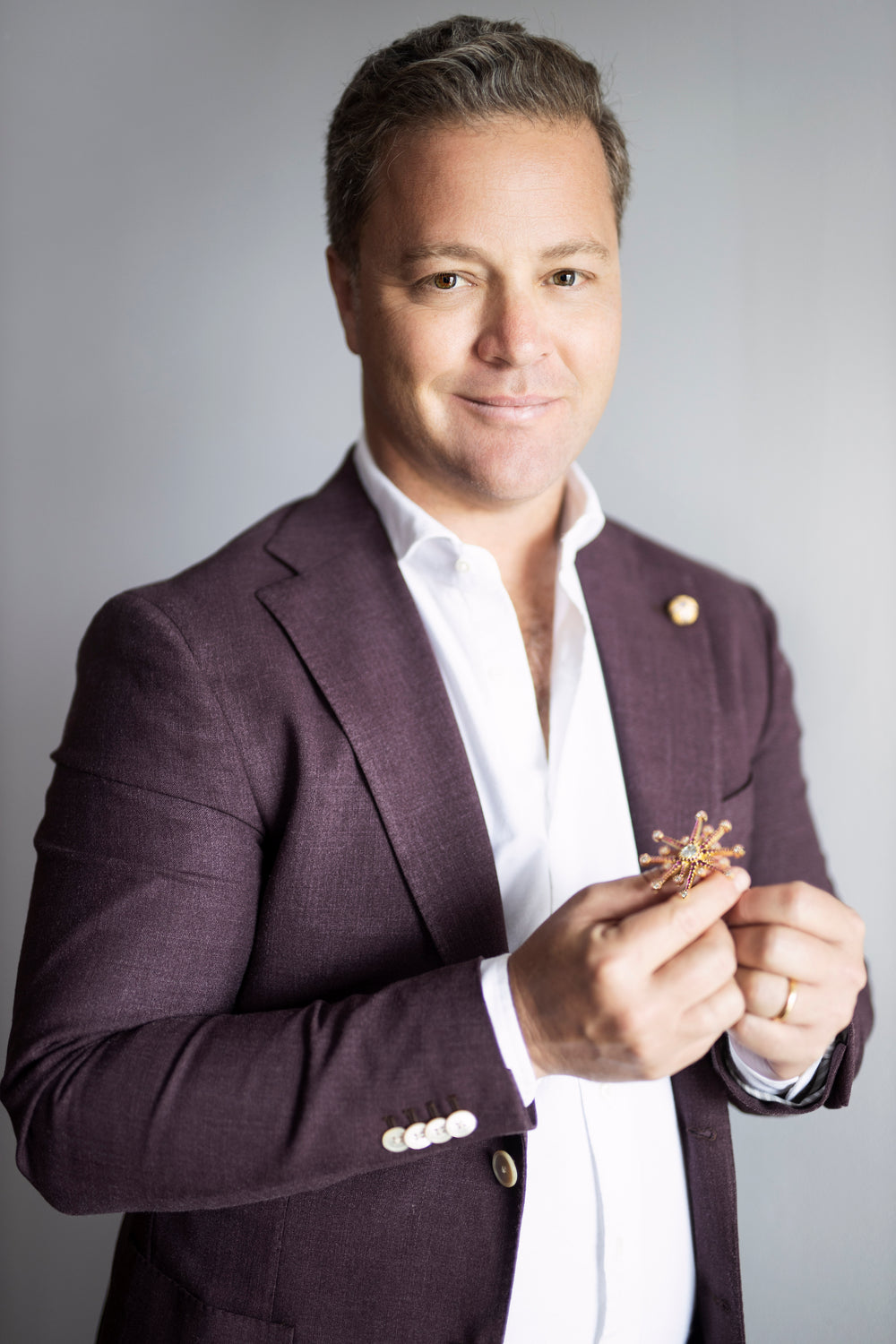Duke of Windsor
"The average young man in America is more interested in the clothes of the Prince of Wales than in any other individual on earth.”
- Men's Wear Magazine September 10, 1924
“In a world where men tend to look more and more alike, he seems more than ever endowed with the capacity to look like no one else”
- Nicholas Lawford
"Did he have style? The Duke of Windsor had style in every buckle on his kilt, every check of his country suits.”
- Diana Vreeland
"The duke, in concert with his tailor, devised the single greatest mode for tailored clothing of the last century"
- Nicholas Antongiavanni
“The details of a man's costume are a matter of individual taste - whether his lapels be broad or narrow or his trousers long or short.”
- Edward VIII, Duke of Windsor
"The past master and still grand champion [of mixing patterns] is the Duke of Windsor (1894-1972), probably the most photographed man in the first half of the twentieth century."
- G. Bruce Boyer
The Duke of Windsor’s Impact on Menswear
The Duke of Windsor’s impact on traditional men’s fashion was so compelling that it caused Bruce Boyer (True Style, Elegance), to write his first popular article which launched his career in menswear.
The Duke’s name lives on in fashion history through two creations that he did not invent, the Windsor Knot and the Prince of Wales check, but his influence extends into almost every piece of traditional men’s clothing, and how we wear it today.
We wear blazers, shirts with attached collars, sweater vests, suede shoes and pants with zippers thanks to him. And he killed just as many styles as he created. I am particularly grateful for the death of the waistcoat and the stiff detachable shirt collar (even though I wore them both to my wedding!).
I did not invent the Windsor Knot
According to the Duke, he did not invent the Windsor Knot.
The so-called "Windsor Knot” in the tie was adopted in America at a later date. It was I believe regulation wear for GI's during the war, when American college boys adopted it too. But in fact I was in no way responsible for this. The knot to which the Americans gave my name was a double knot in a narrow tie - a "Slim Jim" as it is sometimes called.
Fred Astaire Copied Me
The Duke of Windsor's backless formal waistcoat that did not extend beyond the front of his jacket was copied by Fred Astaire.
It was an innovation which I took up with alacrity, discussing it, as I always discussed such matters of moment, with my haberdasher, Hawes and Curtis. Fred Astaire, in his memoirs, recalls an evening spent with me and a party of friends at a night club. He happened to notice the lapels of my white waistcoat, which were of a special design, and the fact that it did not show beneath the front of my dress coat. Next morning he went into Hawes and Curtis, and asked for a waistcoat made in the same style. He was told, apologetically, that this could not be supplied. So he went into another shop, which agreed to make one for him.
A History of Shirting by The Duke of Windsor
It had already begun by 1928, when I found myself making a rather fanciful speech at the annual banquet of the Jewellers and Silversmiths' Association at Birmingham. "Have any of you," I asked, "ever stopped to think why we are all dressed up in these stiff armour-plated shirts tonight?
I believe they originated in this way. A hundred years back, men wore soft pleated shirts of an evening, and then the steam laundries and steam mangles were invented, and men found that their beautiful shirts were returned to them with buttons ground to the most useless fragments. So evening shirt-front studs were invented. But shirt studs won't stay put in a soft shirt. And so our ancestors very rashly decided to have the fronts of their shirts starched.
So, gentlemen, we have first of all the laundries and then we have the jewellers to blame for the 'boiled shirt' - for it is this horrible garment we have to wear now which has given us much untold misery.”
A History of Suit Jackets (lounge suits) by The Duke of Windsor
Typical of it was, in the first place, the lounge suit - its very name suggesting ease - which now became the universal dress for men. Its jacket had grown gradually out of the morning coat, whose tails, by the end of the nineteenth century, were sometimes shortened to a point below the hip until they disappeared altogether, giving place to a long-skirted coat, with a slit up the back. Earlier in the century it had appeared as a sports jacket, but not yet as an urban garment. At first the lounge jacket buttoned high at the neck, but gradually the number of buttons diminished from four to three, to two, and even - though not in the best circles - to one.
Concurrently, the double-breasted lounge jacket, which had originated in the naval reefer, became more popular, the number of its effective buttons likewise diminishing from six to four.
The Duke of Windsor on Popularizing the Tuxedo (the dinner jacket)
According to the Duke, he was directly responsible for the double-breasted tuxedo in midnight blue.
The dinner jacket was slowly but inexorably making inroads on masculine conservatism, a progress gently assisted by my brother George and myself. It was a garment which my grandfather had first worn in his later days as Prince of Wales, but only for very small private dinners. The habit is said to have arisen from the informal mess dress, consisting of a dark blue cloth jacket with silk facings and gilt buttons, which he wore aboard the Serapis on his voyage to India.
Now however the dinner jacket came out into the open and, by the end of the twenties, it was being worn as a matter of course by myself and my friends for supper in the Embassy Club and other such places of amusement.
We took to having it made - and the dress coat too - in a midnight-blue cloth, in place of black, thus unconsciously following my grandfather's practice. At first, as a concession to formality, I used to wear it with a white waistcoat, a new fashion which became popular for a time, and which in a sense echoed, in up-to-date terms, my grandfather's establishment of the white waistcoat in place of the black as the correct dress with a tail coat.
But in the meantime a new version of this evening garment had appeared - the double-breasted dinner jacket. It had first been worn in London, I believe, by dance-band leaders coming from the United States, while Jack Buchanan had sung and danced in it on the stage. But it was regarded a little askance in more conventional circles until granted royal grace and favour by that most elegant of monarchs King Alfonso of Spain. My brother and I started to wear it when we went out in the evenings, often with a plain dark red carnation in the lapel, the flower which had taken the place of the more elaborate mixed buttonholes of my father's and grandfather's time. When we first did so, we were marking, without being at first aware of it, a new stage in the softening-up of the severities of masculine attire.
The Duke of Windsor’s Royal Warrants & Haberdashers
Overcoats
- Scholte, London
- Simpson, London, Ltd.
Suits & Jackets
- Scholte, London
- Emilio Lupori
- Metzel, New York
- James & James Ltd., London
Shirts
- Hawes & Curtis
- G. Battistoni
Shirt Collars
- Hawes & Curtis
Waistcoats
- Scholte, London
- Hawes & Curtis
Cummerbunds
- Hawes & Curtis
- Bernard Weatherhill Inc. New York
Ties
- Hawes & Curtis
- Brooks Brothers
- Charles Dillon, New York
- Clyde of Madison Ave.
- Pierre Cardin
Bowties
- Hawes & Curtis
- Gotley’s of Palm Beach
Belts
- Hermès
Trousers/Pants
- H. Harris, New York
- Forster & Son, London
Shoes
- Peal & Co.
- Keds
Boots
- H. Huntsman & Sons, Ltd. (riding jodphurs)
- J.C. Cording & Co. (Newmarket)
- Peal & Co. (derby)
- Abercrombie & Fitch (hunting)
Golf Shoes
- Peal & Co.
- Ted Bishop Co.
- Town Squires by Freeman
Hats
- Lock & Co. (navy hard bowler, taupe velour trilby, brown velour trilby, black velour trilby, black opera hat, shooting cap with side flaps, grey felt top hat, black silk plush top hat)
- Cavanagh (bowler, straw boater)
- Thomas Begg (soft black bowler)
- Walter Bernard & Son (Royal Yacht Squadron yachting cap)
- Edward Smith (service helmet/topee)
- Sport Lanz (Tyrolean)
- Walter Barnard (pancake crown)
- Pelotari (Basque beret)
Night Shirts
- Charles Dillon (blue cotton)
Dressing Gown
- Hawes & Curtis (striped wool)
Beach Robes
- Fortnum & Mason (red and white striped toweling)
Safari Suits
- Price, Whittaker & Co.
Lederhosen
- Schutzmarke, Loden Plank, Gegenuber der Burg, Wien I Michaelplatz 6.
Tyrolean Suits
- F. Humhal, Vienna
Highland Dress/Kilts
- William Anderson & Sons, Edinburgh
- Chalmers of Oban
Walking Sticks
- Holtzappfel & Co. (saw stick)
- William Burley, London
- Brigg & Sons, St. James, London
- Clarke
Umbrellas
- B. Brigg, London
- Brigg & Sons Ltd., London
- Charles Cook, London (gold mounts)
The Duke of Windsor’s Sizes
At 5'7", the Duke's measurements hardly varied through his lifetime. The usual measurements for his clothes are as follows:
Jackets
chest: 38 to 39 in. (96 to 99 cm.)
waist: 36 in. (91 cm.)
Trousers/Pants
waist: 29 in. (74 cm.)
inside leg: 29 in. (74 cm.)
outside leg: 41 to 42 in. (104 to 106 cm.)
Hats
average size 6⅞
Shoes
7 1/2 b 28 cm (11 in.)
Books on the Duke of Windsor
A Family Album by the Duke of Windsor (London) Windsor Revisited by HRH The Duke of Windsor (Boston)
In his second autobiography, the Duke of Windsor shares what interests him about his story, and leaves history for the historians. His love of clothing and ceremony (inherited from his grandfather) is told from baby clothes to Oxford, becoming a king and life after abdication.
Dressing the Man: Mastering the Art of Permanent Fashion by Alan Flusser
Alan Flusser manages to capture all of traditional men’s fashion, its history, rules, and style in a single work that should be required reading for men that believe clothing traditions are important.
Elegance: A Guide to Quality in Menswear by G. Bruce Boyer
True Style: The History & Principles of Classic Menswear by G. Bruce Boyer
The Englishman’s Suit by Hardy Amies
The Suit: A Machiavellian Approach to Men’s Style by Nicholas Antongiavanni
The Windsor Style by Suzy Menkes
Once a King: The Lost Memoir of Edward VIII by Jane Marguerite Tippett
The Duke had created an unexpurgated version of his autobiography, A King's Story, and these notes were found in the archive of Charles Murphy.
Murphy continued his friendship with the Windsor’s and notes and recollections all the way through the end of Wallis’ autobiography in 1956 are included.
Day by day details of the 1936 abdication with a special section focused on dissecting the evidence of the Duke's support of Germany.
A King's Story: The Memoirs of H.R.H. the Duke of Windsor by The Duke of Windsor
The Duke & Duchess of Windsor Sotheby’s New York September 11-19, 1997
The Jewels of the Duchess of Windsor Sotheby's Geneva April 2-3, 1987
Exceptional Jewels & Precious Objects formerly in the Collection of The Duchess of Windsor Sotheby's London November 30, 2010
The Richard Burton Diaries by Richard Burton, edited by Chris Williams
D.V. Diana Vreeland by Diana Vreeland
The Finest Menswear in the World: The Craftmanship of Luxury by Simon Crompton
Style and the Man by Alan Flusser
Makers of Distinction: Suppliers to the Town & Country Gentleman (London) Nothing But the Best: The Tradition of English Craftsmen from Edwardian to Elizabethan (New York) by Thomas Girtin
Gentleman's Guide to Grooming and Style by Bernhard Roetzel
Beautiful People of the Café Society by Thierry Coudert
Published in 2016, Thierry Coudert does a masterful job of giving context to the amazing scrapbooks created by the Baron de Cabrol to commemorate his glamorous life.
The Jewels of the Duchess of Windsor by John Culme and Nicholas Rayner
The Royal Jewels by Suzy Menkes
The Cartiers by Francesca Cartier Brickell







